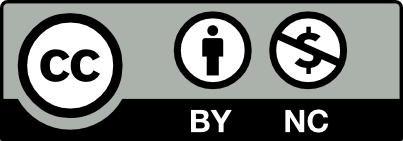Checking for non-preferred file/folder path names (may take a long time depending on the number of files/folders) ...
This resource contains some files/folders that have non-preferred characters in their name. Show non-conforming files/folders.
This resource contains content types with files that need to be updated to match with metadata changes. Show content type files that need updating.
Code from Dorchester et al. (2023): Evaluation of Dual Domain Mass Transfer in Porous Media at the Pore Scale
| Authors: |
|
|
|---|---|---|
| Owners: |
|
This resource does not have an owner who is an active HydroShare user. Contact CUAHSI (help@cuahsi.org) for information on this resource. |
| Type: | Resource | |
| Storage: | The size of this resource is 115.1 MB | |
| Created: | Jun 24, 2022 at 3:34 p.m. | |
| Last updated: | Jun 08, 2023 at 4:20 a.m. | |
| Citation: | See how to cite this resource |
| Sharing Status: | Public |
|---|---|
| Views: | 660 |
| Downloads: | 31 |
| +1 Votes: | Be the first one to this. |
| Comments: | No comments (yet) |
Abstract
Dual-porosity models are often used to describe solute transport in heterogeneous media, but the parameters within these models (e.g., immobile porosity and mobile/immobile exchange rate coefficients) are difficult to identify experimentally or relate to measurable quantities. Here, we performed synthetic, pore-scale millifluidics simulations that coupled fluid flow, solute transport, and electrical resistivity (ER). A conductive-tracer test and the associated geoelectrical signatures were simulated for four flow rates in two distinct pore-scale model scenarios: one with intergranular porosity, and a second with an intragranular porosity also defined. With these models, we explore how the effective characteristic-length scale estimated from a best-fit dual domain mass transfer (DDMT) model compares to geometric aspects of the flow field. In both model scenarios we find that: (1) mobile domains and immobile domains develop even in a system that is explicitly defined with one domain; (2) the ratio of immobile to mobile porosity is larger at faster flow rates as is the mass-transfer rate; and (3) a comparison of length scales associated with the mass-transfer rate (Lα) and those associated with calculation of the Peclet number (LPe) show LPe is commonly larger than Lα. These results suggest that estimated immobile porosities from a DDMT model are not only a function of physically mobile or immobile pore space, but also are a function of the average linear pore-water velocity and physical obstructions to flow, which can drive the development of immobile porosity even in single-porosity domains.
Subject Keywords
Coverage
Spatial
Content
README.txt
Title: Evaluation of Dual Domain Mass Transfer in Porous Media at the Pore Scale By: C. Leland Dorchester, III Advised by: Dr. Kamini Singha Last Edited: June 1, 2023 This CUAHSI Hydroshare Resource is published with the intent of maintaining data availability and transparency in the hydrologic sciences. Published within this resource, the user will find two COMSOL model files labelled "ImpermeableGrains_CUAHSI.mph" and "PermeableGrains_CUAHSI.mph", and the MATLAB code to perform the peclet analysis. The COMSOL model files serve as the "base case" scenario in the modelling work for Dorchester, et al (in review). Because the model files are large, we have only published the model scenarios at an intermediate hydrologic boundary condition, such that the inlet boundary condition for simulating fluid flow is defined as 0.01 Pa. It should be noted that four boundary conditions were assessed for each model scenario, totaling eight simulations. If the user desires to recreate this work, all eight model files can be re-created by the following steps: For the IMPERMEABLE grains scenario: -in the model builder tree, click the drop-down node for "Creeping Flow" -click "Inlet 1_Left" -in the settings window, scroll down to the "Pressure Conditions" tab -define the desired inlet pressure in the text box labelled "P0". The inlet pressures defined in this study were 0.001, 0.01, 0.1, and 1.0 Pa. -save an individual model file for each inlet pressure boundary condition that is defined. For the PERMEABLE grains scenario: -in the model builder tree, click the drop-down node for "Free and Porous Media Flow" -click "Inlet 1" -in the settings window, scroll down to the "Pressure Conditions" tab -define the desired inlet pressure in the text box labelled "P0". The inlet pressures defined in this study were 0.001, 0.01, 0.1, and 1.0 Pa. -save an individual model file for each inlet pressure boundary condition that is defined. Additionally, there is a zipped project folder titled "PecletAnalysisCUAHSI". This project folder includes all of the MATLAB scripts and COMSOL data files that are needed to recreate the peclet analysis as described in Dorchester, et al (in review). The user will find a matlab script titled "PecletAnalysisCUAHSI.m", which reads the associated velocity distribution files from their respective sub-folders. Please note, the user will need to change the filepath assignments at the beginning of the run. Following this step, the file is ready for the user to use. References: C. L. Dorchester, F. D. Day-Lewis, K. Singha, (2023). Evaluation of Dual Domain Mass Transfer in Porous Media at the Pore Scale. Groundwater DOI: 10.1111/gwat.13328
Related Resources
| This resource is described by | Dorchester, C., Day-Lewis, F.D., and Singha, K. (2023). Evaluation of dual-domain mass transfer in porous media at the pore scale. Groundwater DOI: 10.1111/gwat.13328 |
Credits
Funding Agencies
This resource was created using funding from the following sources:
| Agency Name | Award Title | Award Number |
|---|---|---|
| National Science Foundation | EAR-2012730 |
Contributors
People or Organizations that contributed technically, materially, financially, or provided general support for the creation of the resource's content but are not considered authors.
| Name | Organization | Address | Phone | Author Identifiers |
|---|---|---|---|---|
| Fred Day-Lewis | Pacific Northwest National Lab |
How to Cite
This resource is shared under the Creative Commons Attribution-NoCommercial CC BY-NC.
http://creativecommons.org/licenses/by-nc/4.0/

Comments
There are currently no comments
New Comment